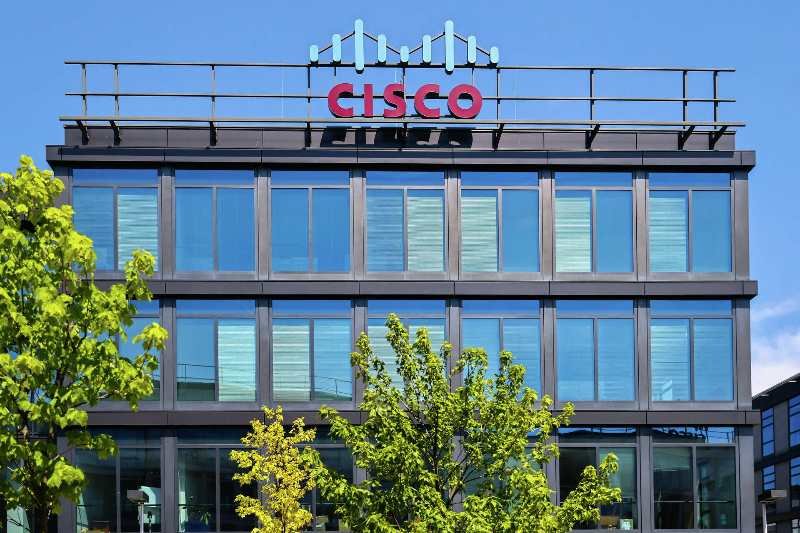In recent years, technology giant Cisco Layoffs Systems has experienced significant shifts in its business strategy, which have included several rounds of layoffs. While layoffs are not uncommon in the tech industry, Cisco’s restructuring efforts have been particularly notable, given the company’s long-standing reputation as a stable employer and industry leader. This article explores the context, reasons, and broader implications of Cisco’s layoffs, shedding light on what this means for the company, its employees, and the tech sector as a whole.
Background on Cisco
Cisco Systems, founded in 1984, is a multinational technology conglomerate headquartered in San Jose, California. It specializes in networking hardware, software, and telecommunications equipment, and has long been a leader in enterprise technology solutions. Over the decades, Cisco has expanded its business through strategic acquisitions and a focus on innovation, becoming synonymous with corporate networking and security solutions.
However, in recent years, the company has faced increasing competition from cloud-native firms and shifts in customer demands towards software-based and subscription models. To stay competitive, Cisco has been forced to rethink its traditional business model, which has led to several rounds of layoffs and restructuring.
Recent Layoffs: A Closer Look

Cisco’s layoffs have come in waves, with the most recent occurring in 2022 and 2023, where thousands of employees were impacted. The company announced plans to lay off around 4,100 workers, representing about 5% of its global workforce. These cuts were spread across various business units and geographies, reflecting a broader strategy to pivot towards new areas of growth while reducing redundancies in declining segments.
The layoffs were not limited to a single department but affected various roles, including engineering, marketing, and customer support. Cisco’s decision to streamline its workforce was driven by a need to realign resources towards growth areas such as software, cybersecurity, and cloud services, which are becoming increasingly critical as businesses transition to digital-first models.
Why is Cisco Laying Off Employees?
Several factors have contributed to Cisco’s decision to reduce its workforce. Understanding these factors provides insight into the company’s evolving strategy and the broader market forces at play.
1. Shift from Hardware to Software
Historically, Cisco has been known for its hardware products, such as routers, switches, and networking equipment. However, the technology landscape has shifted significantly over the past decade, with enterprises favoring software-based solutions that offer greater flexibility, scalability, and lower upfront costs. As a result, Cisco has been transitioning its business model to focus more on software, subscriptions, and services.
This shift has required Cisco to rethink its talent base, moving away from hardware-focused roles and investing in software engineering and cloud-native skills. The layoffs are part of this broader strategy to realign its workforce and remain competitive in a rapidly changing market.
2. Increased Competition
The rise of cloud service providers like Amazon Web Services (AWS), Microsoft Azure, and Google Cloud has posed a significant challenge to Cisco’s traditional networking business. These companies offer cloud-based networking solutions that are often more cost-effective and easier to manage than on-premises hardware. As a result, Cisco has faced pressure to innovate and offer comparable solutions.

To respond to this competition, Cisco has made substantial investments in developing its software and cloud offerings, but this has also meant downsizing in areas where growth has stagnated. By cutting costs in underperforming segments, Cisco aims to free up resources to invest in more strategic areas.
3. Macroeconomic Pressures
Like many companies, Cisco has also been affected by broader economic conditions, including inflation, supply chain disruptions, and fluctuating demand. The technology sector, in particular, has experienced a slowdown following the boom years of the pandemic when demand for digital transformation surged. With economic uncertainty persisting, many tech companies, including Cisco, have opted to tighten their belts and prepare for a potential downturn.
Impact on Employees and Company Culture
Layoffs have a profound impact on the employees who are let go as well as those who remain. For affected employees, the sudden loss of employment can be financially and emotionally challenging. Cisco has made efforts to support laid-off workers through severance packages, outplacement services, and other resources, but the impact is nonetheless significant.
For the remaining workforce, morale can be affected, leading to concerns about job security and the company’s future direction. Frequent restructuring can create an atmosphere of uncertainty, which can make it difficult to maintain productivity and engagement. Cisco’s management has acknowledged these challenges and emphasized the need to support employees through transparent communication and a focus on long-term stability.
Implications for Cisco Layoffs Future
While the layoffs are part of a broader restructuring strategy, they also signal a pivotal moment for Cisco. The company’s future success will depend on its ability to adapt to new market realities and execute its transition to a software-driven business model. Key to this will be how effectively Cisco can compete in areas like cybersecurity, cloud services, and AI-driven networking solutions.
The company’s investments in software and recurring revenue models have shown promise, but transforming a hardware-centric company into a software powerhouse is no small feat. Cisco must not only attract top talent in these areas but also retain its existing workforce by creating a culture that supports innovation and agility.
Broader Impact on the Tech Industry
Cisco’s layoffs are not an isolated event; they are part of a larger trend in the tech industry. Many technology companies, from startups to established giants like Meta and Google, have announced layoffs in response to changing economic conditions and evolving business models. This wave of downsizing highlights the ongoing transformation of the tech sector, where companies are being forced to adapt to new realities or risk being left behind.
The shift from hardware to software, the rise of cloud computing, and the increasing focus on AI and automation are reshaping the industry. Companies that can navigate these changes successfully will emerge stronger, while those that fail to adapt may face further challenges.
Conclusion
Cisco’s layoffs are a reflection of the company’s efforts to realign itself with the future of technology. While the job cuts are difficult for affected employees, they are part of a broader strategy to position Cisco as a leader in software and cloud services. The company’s success will depend on its ability to execute this transition effectively, while maintaining employee morale and staying ahead of industry trends. As the tech sector continues to evolve, Cisco’s journey will be closely watched as a barometer of how legacy technology companies can reinvent themselves in a rapidly changing world.
Why is Cisco laying off?
Cisco is laying off employees as part of a broader strategy to realign its business focus and adapt to the rapidly changing technology landscape. Historically known for its networking hardware, Cisco is shifting its emphasis toward software, cybersecurity, and cloud-based solutions in response to evolving customer demands and increased competition from cloud-native companies like AWS, Microsoft, and Google. This transition requires a reallocation of resources and restructuring of teams, leading to reductions in areas with slower growth. Additionally, economic uncertainty and macroeconomic pressures have prompted Cisco, like many tech firms, to cut costs and streamline operations to maintain profitability and long-term stability.

How many companies are doing layoffs?
How many employees does Cisco have in 2024?
As of 2024, Cisco Systems employs approximately 80,000 people worldwide. The company’s workforce is distributed across various regions, including the Americas, Europe, the Middle East, and the Asia-Pacific. Despite several rounds of layoffs aimed at realigning its business focus towards software, cybersecurity, and cloud-based solutions, Cisco continues to maintain a large global presence, supporting its extensive range of networking, collaboration, and security services. The ongoing restructuring efforts reflect Cisco’s strategy to optimize its operations while adapting to the changing demands of the technology sector.
How many employees are working in Cisco?
As of 2024, Cisco Systems has a global workforce of approximately 80,000 employees. These employees are spread across various business units, including networking, software, cybersecurity, cloud services, and customer support. With a presence in multiple regions around the world, Cisco’s team includes engineers, developers, sales professionals, and technical experts who support the company’s extensive portfolio of enterprise solutions. While recent layoffs and restructuring efforts have reduced the total headcount, Cisco remains a significant player in the tech industry, continuing to focus on innovation and strategic growth in emerging technology sectors.

